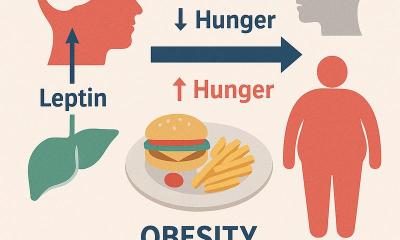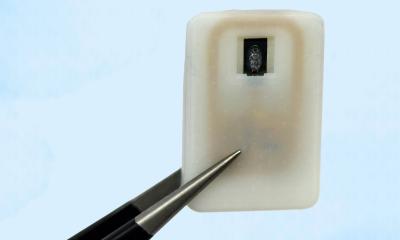Type 2 diabetics have elevated risk of 24 types of cancer
Type 2 diabetics run an elevated risk of developing cancer, according to the world’s largest study on the combined risk of diabetes and cancer, conducted by scientists at the German Cancer Research Centre (DKFZ). The study focused on 24 types of cancer. The effect is most evident for liver cancer and pancreatic cancer. However, by contrast, diabetics have a significantly lower rate of prostate cancer.

Cancer and diabetes: Are the risk factors the same for these two diseases? Or, does diabetes cause body processes that promote the onset or growth of cancer? Why diabetics have a higher rate of cancer than those not affected by this metabolic disorder is still unclear.
To precisely identify the types of cancer in which diabetes plays a role, Kari Hemminki of DKFZ collaborated with colleagues* in Sweden and the USA in the largest study ever on cancer risks of Type 2 diabetics. The study included 125,126 Swedish citizens who were hospitalised due to problems associated with Type 2 diabetes. The epidemiologists compared the cancer incidence in these patients with that of the general population in Sweden.
The scale of the study also made it possible to quantify, for the first time, correlations between diabetes and less common types of cancer. The researchers discovered that Type 2 diabetics have an increased risk of developing 24 of the types of cancer studied. The most significant risk elevation was established for pancreatic and liver cell cancers. The rate of these cancers in Type 2 diabetics is elevated by factor six and 4.25 respectively compared to the general population. The epidemiologists also found the risk of kidney, thyroid, oesophageal, small intestine and nervous system cancers to be more than double.
The study additionally confirmed an observation that suggests that Type 2 diabetics have a significantly lower rate of prostate cancer. This was particularly apparent in diabetics with a family history of the disease. The more family members are affected by diabetes, the lower is the personal prostate cancer risk. ‘Right now, we can only speculate about the causes,’ Kari Hemminki said. ‘Possibly, a lower level of male sex hormones in diabetics may be among the factors responsible for this.’
Could it be that cancer rates in the Type 2 study participants appear to be increased only because their tumours happen to be found earlier as a result of hospital routine diagnostics? To rule this out, the researchers separately analysed how many cancers had occurred in study participants after one and five years respectively following their hospital stays. Although this revealed a slightly lower risk elevation, the trend was the same.
In industrialised countries, between two and 20% of the population become Type 2 diabetics. Hence, this metabolic disease lies among the greatest challenges for the public healthcare system. Type 2 diabetes, which was once incorrectly termed ‘old age diabetes’, is characterised by insulin resistance in tissue; i.e. the cells do not take up glucose from the blood upon receipt of an insulin signal.
For the study, the scientists evaluated data reported to a registry following every hospital release in Sweden from 1964 - 2007. These data were combined with the Swedish National Family Cancer Database, a register of all cancer cases in Sweden from 1958. Since the cancer database is linked with a multiple-generation register, it is possible to track cancer cases among parents and siblings of patients.
* Kari Hemminki, Xinjun Li, Jan Sundquist and Kristina Sundquist: Risk of Cancer Following Hospitalisation for Type 2 Diabetes. The Oncologist 2010, DOI: 10.1634/theoncologist.2009-0300
07.07.2010











